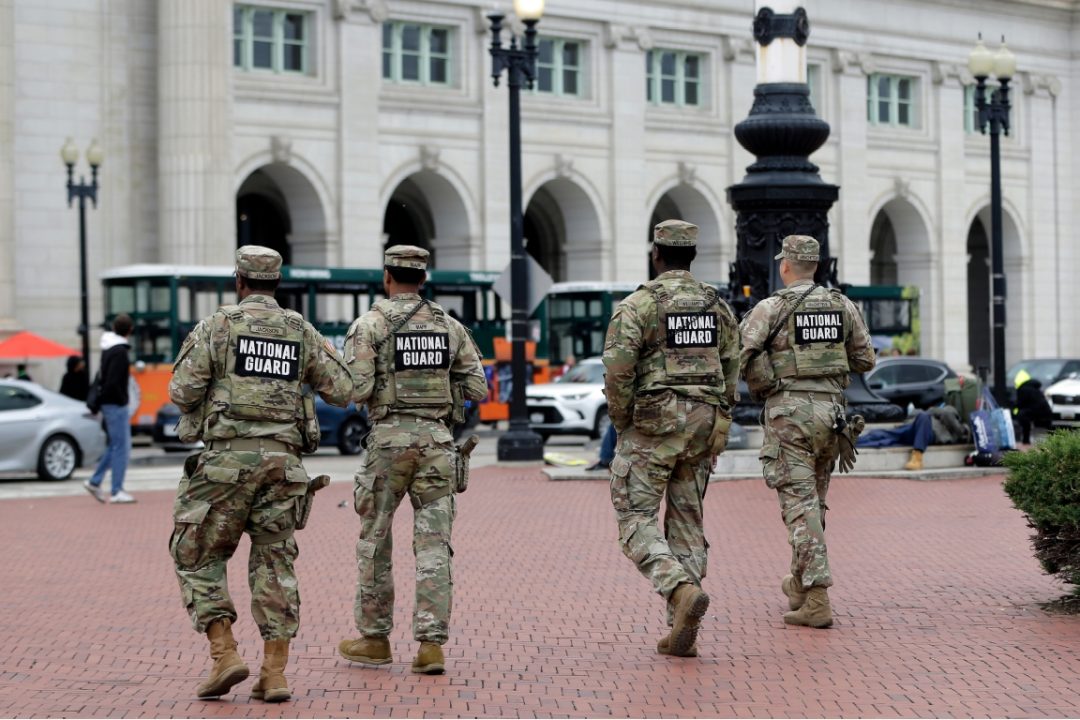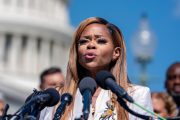
The National Guard Bureau (NGB), a component of the Department of War, has ordered all U.S. states and territories to create a “quick reaction force” (QRF) of troops ready to deploy by January 1, 2026.
According to a leaked memo reviewed by Task & Purpose, each state will field about 500 soldiers. Per the report,
All 50 states, Puerto Rico and Guam will have their own quick reaction force, or QRF. The National Guard Bureau memos show that most states will have 500 troops assigned to these units, except for those with smaller populations like Delaware, which will have 250 troops in its QRF, Alaska with 350, and Guam with 100 troops. The Washington, D.C. National Guard is directed to maintain a “specialized” military police battalion with 50 National Guard soldiers on active duty orders.
The development follows an executive order signed by President Trump on August 25, titled “Additional Measures to Address the Crime Emergency in the District of Columbia.” The order directed the creation of new federal and military “specialized units” for rapid deployment across the homeland. Trump framed it as a necessity to ensure public safety in Washington, D.C., and beyond.
How It Will Work
According to screenshots of the memo published by The Guardian, the new National Guard Quick Reaction Force (NGQRF) will be embedded within the CBRN Assistance Support Element (CASE), a sub-unit of each state’s Homeland Response Force (HRF).
In military language, CBRN stands for “Chemical, Biological, Radiological, and Nuclear” — the range of disasters these teams were originally built to contain. The memo designates the new QRF as an “additional mission set” of 200 personnel “trained in civil disturbance operations.”
In effect, new units within a structure once designed to manage chemical spills and radiation leaks will now prepare to manage crowds.
The NGB will supply each state with 100 sets of riot-control gear and assign two full-time soldiers to oversee personnel, training, and equipment. Each unit will have to submit monthly “readiness reports.” That should be done via the Defense Readiness Reporting System-Strategic (DRRS). That is a classified Pentagon database used to track the operational status of U.S. military forces, now expanded to include digital check-ins for civil-disturbance preparedness.
Based on state allocations, the total force could exceed 23,000 troops nationwide. The memo sets brisk response times. A quarter of each team should deploy within eight hours, half within 12, and the full unit within 24.
The memo was signed on October 8 by Major General Ronald Burkett, the director of operations for the NGB.
Force Against “Dissent”
Task & Purpose describes how the QRFs will be “completely new” units within the Guard, quoting a Guardsman familiar with the plan.
Traditionally, Guard troops mobilize to assist law enforcement or respond to natural disasters. In contrast, the QRFs will stand ready for “civilian activities,” the Guardsman said:
This is different because we’re essentially establishing a unit for space to respond to civilian activities.… We are ready to go when we’re called upon. We’re not asked to stand up an entire unit ready to quell dissent at any moment.
Citing the memo, the outlet further describes how the “dissent” will be managed:
The states are directed to use the “Interservice Nonlethal Individual Weapons Instructor Course.” They will also provide “Level I” and “Level II” civil disturbance training, which includes courses on de-escalation of force techniques, crowd control, handheld radio communications, proper use of body shields, batons and tasers, pepper spray, and public safety, according to the memos.
The Guardsman said the new equipment and instruction “take it [a normal training] up a level,” elaborating that it would include
What you would need for hasty checkpoints and for detainee operations[,] and the training that they’re going to have is much more extensive than what we’re generally doing when we’re training to assist civilian authorities.
Training courses will run in five-day cycles, held in October, November, and December.
Oversight and Ambiguity
The memo does not define the conditions that would trigger deployment, leaving the boundary between state and federal control uncertain. Historically, Guard troops operate under Title 32 authority. That framework allows governors to deploy their forces for emergencies while Washington picks up the bill. When troops are “federalized” under Title 10, they shift to full federal control and become, for legal purposes, part of the U.S. Army. The distinction matters because Title 10 forces are generally prohibited from performing domestic law-enforcement functions under the Posse Comitatus Act. The memo does not specify which authority will govern the new units. It also left open whether future deployments will answer to governors or the Pentagon.
Reporting requirements offer limited oversight. Commanders must update readiness data monthly, but the system largely tracks numbers, not use-of-force standards or mission justification.
Even the definition of “rapid mobilization” remains vague. Most states already maintain Quick Reaction Forces or Rapid Response Forces (RRFs). Those are small elements of roughly 50 to 125 troops trained to deploy within four to eight hours for emergencies such as natural disasters or localized security incidents. The new plan appears to simply scale that model upward, giving it a permanent structure and a new focus on civil disturbance.
Such ambiguities may test both constitutional and political limits. Governors could resist orders they view as federal overreach. Local police agencies might question how the Guard will integrate into crowd-control operations already bound by state law.
Political Context
The initiative follows a series of high-profile domestic deployments under the Trump administration. In the past several months, National Guard troops have appeared in Los Angeles; Washington, D.C.; Chicago; Memphis; and Portland — often amid disputes between federal and local officials over who should control the response to events ranging from lawful protests to riots.
Critics argue that the new QRF program creates a standing mechanism for rapid domestic deployment ripe for abuse. Janessa Goldbeck, a former Marine Corps captain, told The Guardian that
the order represented “an attempt by the president to normalize a national, militarized police force.”
The White House rejected that characterization. Abigail Jackson, a spokeswoman, said,
The president has lawfully deployed the National Guard to several cities either in response to violent riots that local leaders have refused to quell, or by invitation to assist local law enforcement as appropriate.
The pattern is hard to miss. Unrest — whether spontaneous or orchestrated — is followed by heightened federal security.
The timing is especially critical ahead of the 2026 election cycle. The expansion of military readiness for “civil disturbance operations” risks deepening the normalization of military involvement in political life, particularly as bad actors could seek to channel legitimate public frustration into destructive, unlawful displays. Yet the interplay between the camps of “chaos” and “order” functions less as conflict than as choreography — a recurring mechanism through which both sides advance the consolidation of state power.
Related:
“Invasion From Within”: Trump’s Plan to Use the Military in U.S. Cities
Trump Orders “Specialized Units” for Rapid Deployment in D.C., Other Cities
Court Upholds Block on Trump’s National Guard Deployment in Illinois





